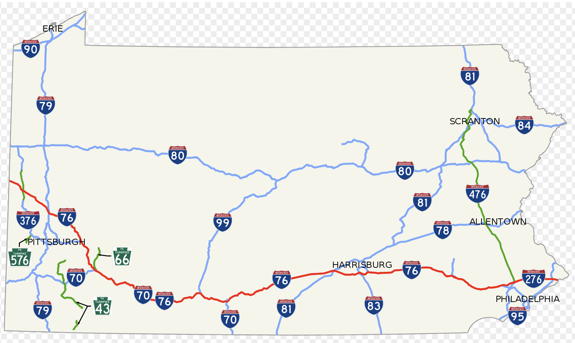


Framed or unframed, desk size to sofa size, printed by us in Arizona and Alabama since 2007. Explore now.
Shorpy is funded by you. Patreon contributors get an ad-free experience.
Learn more.

- Details, Details
- What's that building to the left of the tower?
- Coal Barges
- Bromo-Seltzer
- Inner harbor
- The Basin
- What a headache!
- Giant stepladder?
- Baldwin 62303
- Baldwin VO-1000
- Cold
- No expense spared
- Tough Guys
- Lost in Toyland
- And without gloves
- If I were a blindfolded time traveler
- Smoke Consumer Also Cooks
- Oh that stove!
- Possibly still there?
- What?!?
- $100 Reward
- Freeze Frame
- Texas Flyer wanted
- Just a Year Too Soon
- WWII -- Replacing men with women at the railroad crossing.
- Yes, Icing
- You kids drive me nuts!
- NOT An Easy Job
- I wonder
- Just add window boxes
Print Emporium
Turnpike Tollbooth: 1942

July 1942. "Pennsylvania Turnpike, Pennsylvania. Toll booths." Medium format acetate negative by Arthur Rothstein for the Office of War Information. View full size.
Cadillac Coming Through
And a fairly rare one -- a 1941 Series Sixty-Two Four-Passenger Coupe. Original price $1,505 when average household annual income was $1,750! Looks like only 1,900 of this model were built.
"But I did not know until this day --
-- it was Barzini all the while."
Duck!!
Isn't that Sonny Corleone going through the toll booth?
Familiar Scene
Reminds me of the toll booth where Sonny Corleone got whacked. Even the car is the same style and vintage more or less. Great, now I've got the Godfather theme stuck in my head.
Toll-free
For decades when I drove down to NYC from Montreal I’d be annoyed by the toll booths (the slowing down, the line, the wait) although I did actually enjoy throwing the handful of change into the toll maw. (Either that or picking up a ticket and paying for the whole thing at the end.) Now I do nothing and I magically receive an invoice in the mail (yes, even up here in Canada). It’s quicker and more efficient, but I do miss the flinging of the coins.
Terminal Toll
Until 1950, Carlisle was the eastern end of the PA Turnpike.
To come: interstates, tolls, defense, and Eisenhower
The first limited-access long-range highway in the U.S,, the Pennsylvania Turnpike became the prototype for the Interstate Highway System, authorized in 1956. (Actually an earlier prototype was the German autobahn, which Hitler enthusiastically championed.)
The authorizing legislation for the U.S. interstates stipulated that the highways were not to have tolls--with one key exception: any existing toll highway could maintain tolls when it was incorporated into the national system. Thus Pennsylvania has continued to charge drivers on I-76 for six decades and counting. (The toll booths are still there, but you don't have to stop, since your E-Z Pass or a Toll-by-Plate photo will get you.)
It's also significant that Rothstein photographed the Turnpike for the OWI. Potential military use of controlled-access highways was always in mind (as it was for Hitler). The 1956 enabling legislation was called the National Interstate and Defense Highways Act, and the entire system is now named for President (and WWII hero) Dwight D. Eisenhower.

























On Shorpy:
Today’s Top 5